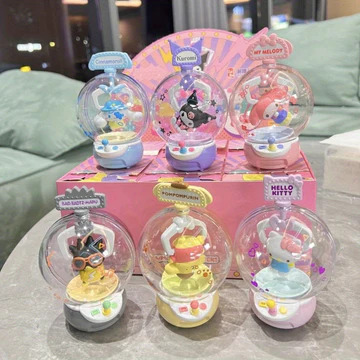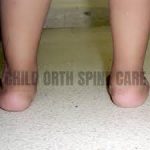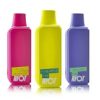Making toys for kids can be a creative and fulfilling experience. Not only do you get to design something fun and engaging, but you can also create toys that are educational, safe, and specifically suited to a child’s developmental stage. There’s a lot of joy in making toys that kids will love, and with a little effort, you can create something special. Whether you’re crafting a DIY plushie or wooden blocks, making toys is a fantastic way to nurture creativity while giving children a unique gift they’ll cherish. In this article, we’ll explore what kind of toys to make, how to choose, and the benefits of making your own toys.
Why Make Toys?
There are a few great reasons why making toys at home is a smart choice:
- Customization: When you make toys yourself, you can customize them to fit the child’s interests. Does your little one love dinosaurs? Or maybe they’re into space? You can create something they’ll truly enjoy.
- Safety: When buying toys, there’s always the risk of unknown materials or small parts that could be dangerous. When you craft toys yourself, you control the materials and design, ensuring the toys are safe.
- Cost-Effective: Store-bought toys, especially high-quality ones, can be pricey. Making them at home, using materials you already have or can purchase affordably, is often more economical.
- Creative Freedom: You get to be as creative as you want. From kawaii toys (those super cute, Japanese-inspired creations) to more traditional options, the possibilities are endless.
- Educational Value: Handmade toys can be tailored to help kids learn and develop skills like fine motor abilities, problem-solving, and creativity.
Now that you know why you might want to make toys, let’s explore some types of toys you could create at home.
Types of Toys to Make
- Kawaii Toys
If you love all things cute, you can make kawaii toys. These are adorable, often featuring exaggerated facial expressions, tiny features, and a soft, plushy texture. Think of cute little animals, smiling clouds, or tiny desserts with eyes! Making kawaii toys is not only fun but can also be as simple as sewing together soft fabrics, adding eyes, and giving them a smile. They make perfect cuddle companions for young kids and are easy to personalize. - Plush Toys
Plushies are always a hit with kids. They’re soft, cuddly, and perfect for children of all ages. You can make animals, dolls, or characters from your child’s favorite stories or shows. Fabric, stuffing, and a few sewing tools are all you need. Plus, with homemade plush toys, you can ensure they’re made from hypoallergenic and safe materials. - Wooden Toys
Wooden toys are durable and eco-friendly, making them a popular choice for parents who want to avoid plastic. These can range from wooden blocks to simple cars, puzzles, or animal figurines. Wooden toys offer endless possibilities and can be painted or left in their natural wood state for a rustic, classic feel. You might need basic woodworking skills and tools, but the result is long-lasting and timeless. - Educational Toys
You can create toys that help children learn and develop skills. For example, simple puzzles can teach problem-solving, while counting blocks can help with numbers. Creating toys with letters, shapes, or colors introduces early learning in a fun, interactive way. For older kids, you could make more complex toys like science kits or experiment sets. - Pretend Play Toys
Kids love pretending, so toys that encourage imaginative play are always a hit. You could make simple costumes, felt food, or cardboard box houses. Things like felt fruits and vegetables, toy kitchen utensils, or even a toy cash register allow kids to mimic real-world activities. These toys enhance their creativity while teaching practical life skills. - Sensory Toys
For younger children or kids with sensory processing needs, toys that stimulate touch, sight, and sound are very engaging. Think of making sensory bags filled with safe items like rice, sand, or soft beads, or crinkle toys that make noise when touched. These toys are particularly great for babies and toddlers as they help with cognitive development and sensory exploration.
Benefits of Making Your Own Toys
Making toys at home brings several benefits beyond just having fun. Here’s why it’s worth considering:
- Personalized Experience: Every toy you make can be tailored to the specific needs, preferences, and abilities of the child. Whether it’s their favorite animal, color, or activity, handmade toys can be a perfect match for their personality.
- Bonding Time: Crafting toys can also be a fun activity to do with your kids. You can involve them in the creative process by letting them choose the materials or colors. This fosters a sense of ownership and pride in their new toy.
- Eco-Friendly: Homemade toys can often be made from sustainable, eco-friendly materials, such as wood, fabric scraps, or recycled items. You get to reduce waste and avoid contributing to the plastic pollution caused by mass-produced toys.
- Development of Fine Motor Skills: Many DIY toys, like puzzles or building blocks, help children develop fine motor skills and hand-eye coordination as they manipulate the parts.
- Educational Value: As mentioned earlier, educational toys that you make yourself can have a significant impact on learning. These can support early literacy, numeracy, or motor skill development, making playtime both fun and informative.
- Creative Expression: Crafting and making things by hand allows you to tap into your creativity. For kids, it’s also a way to explore their imagination and see how ideas come to life in physical form.
Steps to Make Toys for Kids
Here’s a simple process you can follow to get started with making your own toys:
- Choose Your Materials: Start by gathering the materials you’ll need. If you’re making kawaii toys, you’ll want soft fabrics, stuffing, and thread. For wooden toys, wood, paint, and a few basic tools are essential.
- Decide on a Design: Think about what type of toy would suit the child you’re making it for. Do they like cute and cuddly? Or perhaps they enjoy building and creating things? You can sketch out your ideas before starting to ensure you have a clear plan.
- Cut and Assemble: If you’re making a plush toy, cut out the fabric shapes you need and start sewing them together. For wooden toys, cut the pieces out and sand them down to remove any rough edges. The assembly phase is where everything starts coming together!
- Add Details: Once the main structure is in place, it’s time to add those finishing touches. For kawaii toys, this could mean adding big, shiny eyes and a smile. For educational toys, it might involve painting letters or numbers on the pieces.
- Test for Safety: Before giving the toy to a child, test it to make sure it’s safe. Ensure that all parts are securely fastened and that there are no sharp edges or small pieces that could become a choking hazard.
- Decorate and Personalize: Finally, decorate the toy as needed. Add some paint, markers, or additional accessories like buttons or ribbons. Personalizing the toy with the child’s name or favorite color can make it even more special.
Conclusion
Making toys for kids is not only a rewarding experience, but it also allows for endless creative possibilities. Whether you decide to craft kawaii toys, wooden puzzles, or sensory objects, handmade toys bring joy, learning, and a personal touch that store-bought toys often lack. They’re more cost-effective, safer, and eco-friendly, plus they create lasting memories for both the maker and the child. By following a few simple steps and using your imagination, you can create toys that will be cherished for years to come.
FAQs
What are kawaii toys?
Kawaii toys are cute, often small, plush toys inspired by the Japanese “kawaii” culture, which emphasizes all things cute, fun, and colorful.
Is it hard to make toys for kids?
It depends on the type of toy you’re making. Simple plushies or wooden blocks are quite easy, even for beginners, while more complex toys may require some skills in sewing or woodworking.
What materials should I use to make safe toys?
Use non-toxic, child-friendly materials like soft fabrics, untreated wood, and safe paint. Always avoid small parts for younger children to prevent choking hazards.
Can I involve my child in making their toys?
Absolutely! Kids can help with simple tasks like choosing colors or adding decorations. It’s a great bonding activity and can help foster their creativity.
Are homemade toys really better than store-bought ones?
Homemade toys are often more personalized and eco-friendly, but it depends on what you’re looking for. Store-bought toys can be convenient, but homemade toys carry the charm of being made with love and care.
Why Eric Emanuel Shorts Are Taking Over Athleisure
















